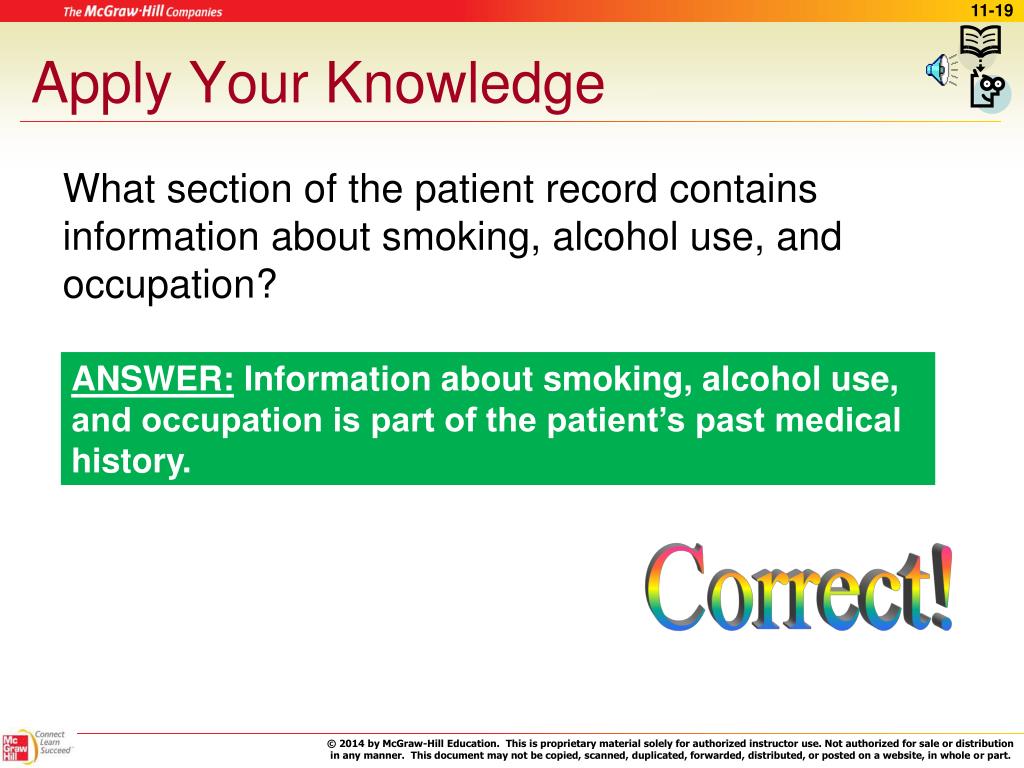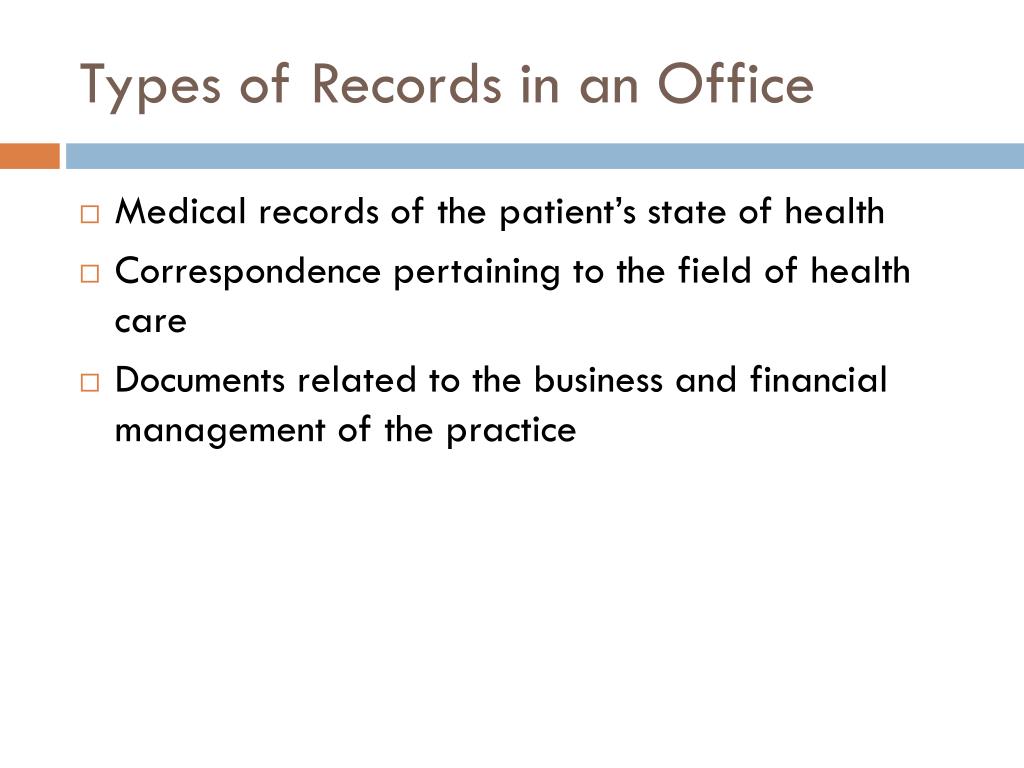There are two different documentation formats that are used for medical records, the source-oriented medical record and the problem-oriented medical record. the more traditional format used for recording data in the medical record is the source-oriented medical record (somr). A problem oriented medical record (pomr) is a way of recording patient health information in a way that’s easy for physicians to read and revise. the basic idea of pomr is to equip doctors with the ability to understand the patient’s medical history. Medicalrecord excellence means: there is a consistent system of legible data entry. for example, problem-oriented, with a systemized history-exam-assessment-plan (h-e-a-p) or subjective-objective-assessment-plan (s-o-a-p) format. they are written in a.
Maine Medical Records Laws Findlaw
Here's a guide for referencing electronic sources in apa format. find examples of apa format for online journal, online documents, and more. bernhard lang / getty images there are a number of special style concerns for referencing electroni. Chart providing details of maine medical records laws internet explorer 11 is no longer supported. we recommend using google chrome, firefox, or microsoft edge. are you a legal professional? visit our professional site » created by findlaw'. You can have a source oriented health record, problem oriented health record, or an integrated health record format. there is no rule on which type of format you have to use -it's purely organizational-based. source oriented medical record. in a source-oriented record things are grouped together by point of origin.




There are two different documentation formats that are used for medical records, the source-oriented medical record and the problem-oriented medical record. source-oriented medical record (somr) the more traditional format used for recording data in the medical record is the source-oriented medical record (somr). secondly, what is the advantage of using a problem oriented medical record pomr )? consistancy to documentation. ? organizes information. ? unifying care plan and progress notes. ?. Request patient medical records, refer a patient, or find a ctca physician. call us 24/7 to request your patient's medical records from one of our hospitals, please call or fax one of the numbers below to start the process. to refer a patie.
Ch 5notes problem oriented medical record (pomr)note expg 71 6 components 1. comprehensive health history 2. complete physical exam 3. problem list 4. assessment and plan 5. baseline and problem directed lab and radiologic imaging studies 6. progress notes problem list running log including: problem number, date of onset, description of problem, and date problem was resolved or became an. A variety of formats are used to maintain manual records, including the source oriented records (sor), problem oriented records (por), and integrated records. in a source oriented medical record (sor), the information about a patient's care and illness is organized according to the "source" of the information within the record, that is, if it is recorded by the physician, the nurse, or data collected from an xray or laboratory test are filed under their specific sectionalized areas in the. Medical skin problems can be extremely serious, though many of them are treatable. learn more about medical skin problems at howstuffworks. advertisement medical skin problems can be serious and life-threatening. understanding medical skin.
Source-oriented (so) charting is a narrative recording by each member (source) of the health care team charts on separate records. so charting is time-consuming and can lead to fragmented care. problem-oriented medical record (pomr) charting was introduced by dr. lawrence reed to focus on the client's problem. In a problem oriented medical record, the record is kept together by problem number, where a number is ***** to each problem. this is the traditional way that most physicians document their records, both in training and in practice. progress notes in these records are kept in soap format. The open-source vista health records software, which has nothing to do with the microsoft operating system, may yet prove a huge hit. by steven j. vaughan-nichols computerworld open-source medical software has been around for over 30 year. -problem oriented medical record-source oriented medical record-format of medical record documentation that breaks information into smaller components-information that comes from the physician, examinations, and test results.
What Is A Source Oriented Medical Record How Does It
Summarize, in 250 to 300 words, the differences among source oriented records, problem oriented records, and integrated records. 2. include how you think the advantages and disadvantages of each record format affect everyday work—remember to think about retrieving records as well as filing them. 3. This course aims to set the record straight and deconstruct these medical dramas into the technical and emotions and thoughts. case-based, problem-oriented format utilized to source-oriented and problem-oriented medical record format develop foundational understanding of the science of the unconscious. T. e. catanzaro, dvm, mha, fache medical records are for professional communications between healthcare providers. they should ensure a continuity of quality care and reflect a practice-specific common standard of care. the problem-oriented medical record. New employees often go through an orientation program which familiarizes them with their new company. this is a vital component in the development of a dedicated and focused workforce. orientation also enables new employees to socialize and.
Medicalrecords management types. there are many different ways to document and manage patient information, source-oriented and problem-oriented medical record format including source-oriented medical records, problem-oriented medical records, soap documentation, and cheddar format. source-oriented and problem-oriented are the most common ways to document patient information in medical records. Medicalrecords that are used by physicians come in three types: · problem oriented record · source oriented record · integrated record a source oriented record is a conventional approach, where data is organized according to its suppliers or sour. In a pomr or problem oriented medical record, the record is kept progress notes in these records are kept in soap format. (physical exam, labs), a=assessment (diagnosis, prognosis), p=plan.
Problem-oriented medical record (pomr) the pomr as initially defined by lawrence weed, md, is the official method of record keeping used at foster g. mcgaw hospital and its affiliates. many physicians object to its use for various reasons it is too cumbersome, inhibits data synthesis, results in lengthy progress notes, etc. Your private medical record is not as private as you may think. here are the people and organizations that can access it and how they use your data. in the united states, most people believe that health insurance portability and accountabil.
It’s a patient’s right to view his or her medical records, receive copies source-oriented and problem-oriented medical record format of them and obtain a summary of the care he or she received. the process for doing so is straightforward. when you use the following guidelines, you can learn how to. Also, what are the types of medical record? there are two different documentation formats that are used for medical records, the source-oriented medical record and the problem-oriented medical record. the more traditional format used for recording data in the medical record is the source-oriented medical record (somr). So, let’s get started with problem oriented charting. the origins of pomr charting and why it is so popular. problem oriented medical records (pomr) were first described by dr. lawrence weed in 1968. as a patient-focused approach, pomr is advantageous to both patients and providers. Physician. -cheddar. -objective. -problem oriented medical record. -source oriented medical record. -format of medical record documentation that breaks information into smaller components. -information that comes from the physician, examinations, and test results. -medical record composed of the database; problem list; educational, diagnostic, and treatment plan; and progress notes.